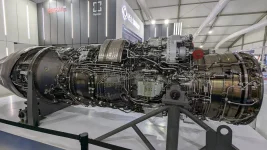- Views: 3K
- Replies: 29

In a surprising turn of events, the Pakistan Air Force (PAF) has seemingly outmaneuvered its Indian counterpart in modernizing its fleet, despite facing significant economic hurdles.
While India boasts a larger defence budget and a booming economy, bureaucratic delays and procedural complexities have hampered the Indian Air Force's (IAF) acquisition efforts.
Pakistan's success can be attributed to several key factors. Firstly, the PAF enjoys a more centralized decision-making process, allowing for swift responses to operational needs. This contrasts with India's multi-layered bureaucracy, which often results in protracted procurement timelines.
Secondly, Pakistan's close ties with China have provided access to cost-effective solutions, such as the jointly developed JF-17 Thunder fighter jet and the ZDK-03 AWACS aircraft. These acquisitions have significantly enhanced the PAF's capabilities without placing an undue burden on Pakistan's finances. China's willingness to offer flexible payment options and credit lines has further facilitated these deals.
Thirdly, Pakistan has adopted a pragmatic approach, prioritizing affordable and maintainable platforms that meet its specific defence requirements. This contrasts with India's pursuit of high-end, expensive platforms like the Rafale, which often involve lengthy negotiations and extended delivery schedules.
While India has made strides in promoting transparency and self-reliance in its defence sector, these initiatives have inadvertently contributed to delays. The "Make in India" program, while strategically important, has faced challenges in timely delivery, as exemplified by the HAL Tejas LCA program. Additionally, India's stringent procurement procedures, aimed at curbing corruption, have also added to the timeline.
Experts point to the 2012 MMRCA deal for 126 Medium Multi-Role Combat Aircraft as a prime example of these challenges. Originally intended to bolster the IAF with a large fleet of modern fighters, the deal was mired in delays for over a decade, ultimately resulting in a scaled-down purchase of only 36 Rafale jets.
This situation highlights a critical disparity in procurement strategies. Pakistan, despite its economic constraints, has demonstrated agility and efficiency in modernizing its air force. India, on the other hand, grapples with bureaucratic bottlenecks and procedural complexities that hinder its acquisition process.
The implications of this trend are significant for the regional balance of power. While India maintains a quantitative edge in terms of overall air power, Pakistan's rapid modernization efforts could potentially narrow the qualitative gap. This underscores the need for India to streamline its procurement processes and address systemic inefficiencies to maintain its strategic advantage.



